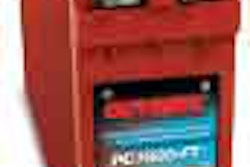Based on the Commerce Department’s most recent Steel Import Monitoring and Analysis (SIMA) data, the American Iron and Steel Institute (AISI) reported today that steel import permit applications for the month of January totaled 2,011,000 net tons (NT). This is first time they have broken the 2 million ton mark since last September. This was an 8.6% increase from the 1,852,000 permit tons recorded in December and an 11% increase from the December preliminary imports total of 1,811,000 NT. Import permit tonnage for finished steel in January was 1,602,000 NT, up 11% from the preliminary imports total of 1,445,000 NT in December. January 2011 total and finished steel import permit tons would annualize at 24,128,000 NT and 19,226,000 NT, up 1% and 2%, respectively, from the 23,868,000 NT and 18,787,000 NT imported in 2010.
In January, the largest finished steel import permit applications for offshore countries were for Korea (213,000 NT, up 22% from December), Japan (134,000 NT, up 25%), Germany (94,000 NT, up 31%), Australia (74,000 NT, up 44%) and China (54,000 NT, down 2%). The estimated finished steel import market share in January was 20%.
Finished steel import permits for major products that registered large increases in January vs. the December preliminary include line pipe (up 56%), oil country goods (up 46%), standard pipe (up 32%), sheets and strip all other metallic coated (up 30%), reinforcing bar (up 25%), wire rods (up 22%) and plates in coil (up 21%).
In commenting on the January 2011 SIMA data, Thomas J. Gibson, AISI president and CEO, stated that, “the domestic steel industry is expecting 2011 to be a period of ongoing, but still fragile and uneven, recovery. The fact that steel import market share is staying in the 20 percent range is a cause of ongoing concern. As conditions in the U.S. economy and steel market continue to improve, it is especially important that dumped and subsidized imports not undermine the progress that domestic steel companies are making to get back to full recovery.”









